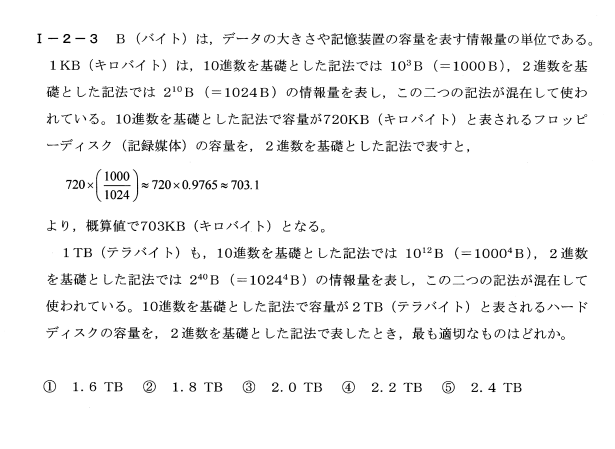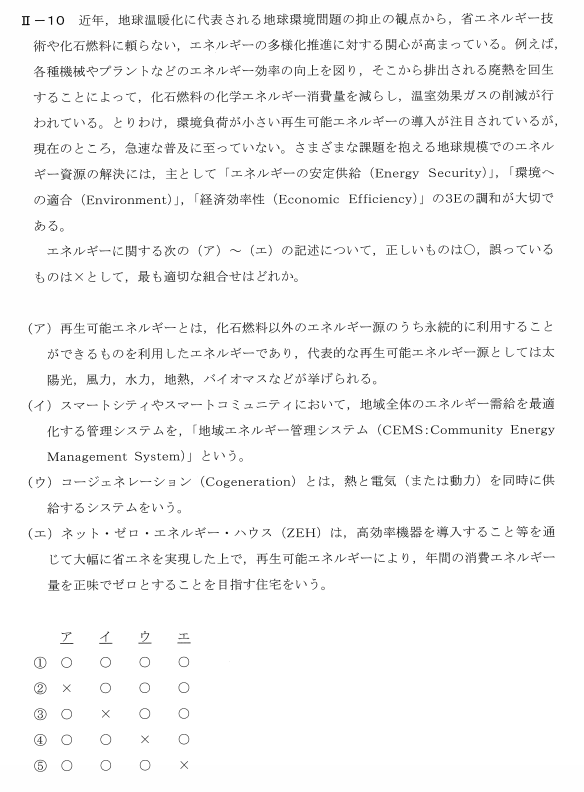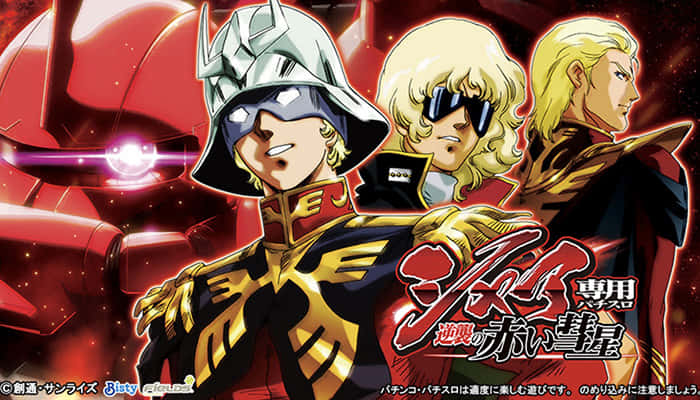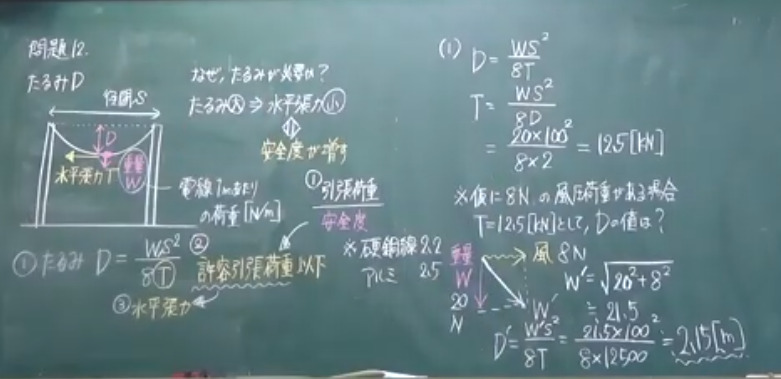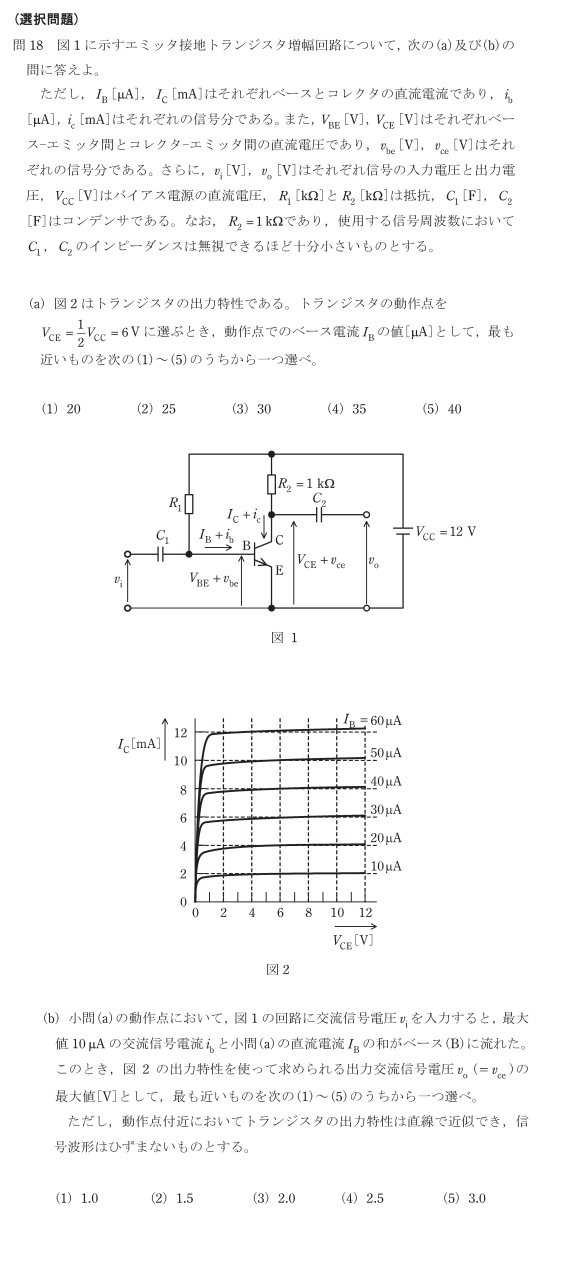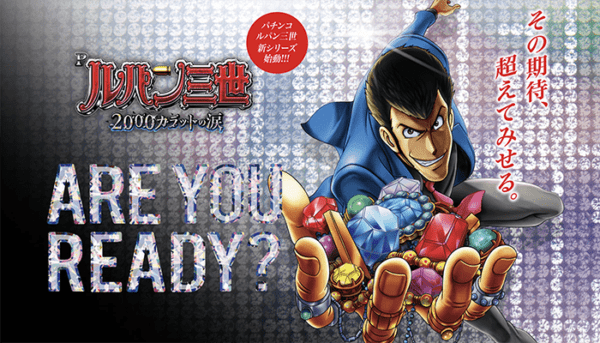要約1
In this video, the host discusses photogrammetry application Meshroom, a free and open source application built around the Alice Vision framework. The application allows users to turn a series of photographs into a 3D object. The software is supported by the non-profit Alice Vision Association, with the aim to democratize 3D digitization technologies. Meshroom requires an Nvidia GPU with CUDA support and a recommended specification of an i7 PC or equivalent with 32GB of RAM. The software can also run without an Nvidia GPU but with lower quality results. The application has both a high-level and low-level user interface, making it accessible for both novice and advanced users. The host demonstrates how to use Meshroom to create a 3D model of a wooden elephant.
このビデオでは、写真測量アプリケーション「Meshroom」について説明します。Meshroomは、Alice Visionフレームワークをベースに構築された、フリーでオープンソースのアプリケーションです。このアプリケーションは、ユーザーが一連の写真を3Dオブジェクトに変換することを可能にします。このソフトウェアは、3Dデジタル化技術の民主化を目的とした非営利団体「Alice Vision Association」によってサポートされています。Meshroomは、CUDAをサポートするNvidia GPUと、32GBのRAMを搭載したi7 PCまたはそれと同等の推奨スペックを必要とします。また、Nvidia GPUを搭載していない場合でも動作しますが、結果は低品質になります。このアプリケーションは、高レベルと低レベルの両方のユーザー・インターフェースを備えており、初心者から上級者まで利用することができます。Meshroomを使って、木製の象の3Dモデルを作成する様子をご紹介しています。
説明するビデオへようこそ
コンピューター
今回は、写真測量のアプリケーションである
というフォトグラメトリーアプリケーションを紹介します。
メッシュルーム
写真測量は、一連の写真を
写真から3Dオブジェクトを作成します。
というアプリケーションを使ってみました。
という無料のフォトグラメトリーアプリケーションを使いました。
オートデスク123d catchという無料のフォトグラメトリーアプリケーションを使って
このような3Dプリントになりました。
しかし、その時以来、123d catchは
というアプリケーションに置き換わりました。
リキャッププロというアプリケーションに変えた。
年額
meshroomは、オープンソースの写真測量ソフトです。
オープンソースの無料写真測量アプリケーション
アプリケーションです。
それでは
を見てみましょう。
よく見てみましょう。
ここがAlice Visionのウェブサイトです。
alice visionのウェブサイトです。
マッシュルーム
alice visionはフレームワークで
コンピュータビジョンツールを提供します。
写真を3Dモデルに変換するツールです。
meshroomは写真測量アプリケーションです。
alice visionを中心に構築されたアプリケーションです。
これらは全てaliceのバージョンアソシエーションによってサポートされています。
バージョン・アソシエーションに支えられています。
非営利団体であり、3Dデジタル化技術の
3Dデジタル化技術を民主化することを目的とした非営利団体です。
写真とこのように
meshroomのユーザーは、アリスビジョンの活動を支援するために、寄付をすることができます。
アリスビジョンの活動を支援するために寄付をすることができます。
希望する
メインサイトに戻り、「meshroom」をクリックすると
meshroomをクリックして、ソフトウェアをダウンロードしてください。
もうお分かりだと思いますが、下にスクロールすると
下にスクロールすると、2つのダウンロードリンクがあります。
Windows用とLinux用です。
また、メッシュルームには
nvidia gpuとcudaが必要です。
私のテスト機では2ギガバイトのGT1030で動いています。
ギガバイトGT1030を使用しています。
なお、より広範な推奨ハードウェア仕様は
ハードウェアの仕様は、i7 PCまたはそれと同等のもので
32ギガバイトのRAMを搭載しています。
しかし、ここではクアッドコア3ギガヘルツのAMD A8で動作させています。
を弖紗している。
16ギガバイトのラムを搭載しています。
問題なく動作しています。
最後に、ハードウェアについてですが
ここに書かれていることに関係なく
きのこを実行することは可能です。
NVIDIA GPUなしで動作させることができます。
サポートページをいくつか見てみると
ドラフトメッシュを使えば、それが可能であることがわかりました。
メッシュを使えばできることがわかりました。
これをクリックすると、これを使うことが非常によくわかると思います。
しかし、マッシュルームに関することはすべて
しかし、もしドラフトメッシュを使うなら
ドラフトメッシングを使うと
低品質の結果を得ることになります。
私が試したわけではないのですが
このことは、あなたがNVIDIAをお持ちでない場合に備えてお伝えしておこうと思いました。
NVIDIA GPUを持っていない人のために言っておきます。
とにかく、ソフトウェアをダウンロードしてみましょう。
Windowsのリンクをクリックします。
私は現在Windows10を使用しています。
そうします。
327メガバイトのファイルを保存します。
327メガバイトのファイルを保存し、ダウンロードしたファイルを
そのファイルがあるフォルダに移動します。
ファイルを解凍する必要があります。
そこで解凍します
解凍が完了したら、もうインストールは必要ありません。
インストールはもう必要ありません。
を開くだけです。
フォルダを開くだけだからです。
を開くだけだからです。
画面にはもう少しスペースが必要です。
パッケージを実行するために必要なことは
meshroom xc ファイルをクリックするだけです。
この素晴らしいソフトウェアアプリケーションは
meshroomは、非常によく設計されています。
ハイレベルなユーザーインターフェースと
低レベルのユーザーインターフェース
特に画面の一番上にあるのは
高レベルのUIがあります。
ほとんどの人が3Dオブジェクトを作成することができます。
オブジェクトを作成することができます。
そして、画面の下には
低レベルのUIはノードベースになっています。
研究者や上級ユーザが完全に制御できるようにするものです。
上級ユーザが写真測量プロセスを完全にコントロールすることができます。
写真測量プロセスを完全にコントロールすることができます。
この下にあるものはすべて非常に興味深いものです。
とても興味深いのですが、このビデオでは
このビデオでは、画面上部にあるハイレベルな
画面上部のインターフェイスをご紹介します。
そしてもちろん、皆さんはいくつかの
このビデオでは2つのデモンストレーションを行います。
このビデオでは2つのデモンストレーションを行います。
木製の象の3Dモデルを作るところから始めようと思います。
象の3Dモデルを作成します。
オートデスク123Dキャッチで作成したものと
このために、36枚の
の画像があります。
この象の周りを回転させながら、あらゆる角度から撮影した
この作業を始めるにあたって
このメッシュルームで、まず最初にすることは
メッシュルームでの作業を始めるために、まず必要なことは、ファイルに名前をつけることです。
を実行し、保存を実行します。
保存して、フォトグラメトリーというフォルダに移動します。
フォトグラメトリーというフォルダに移動します。
象の画像が入っているフォルダがあります。
象の画像が入っているフォルダがあります。
このプロジェクトをelephantという名前で保存します。
test
このプロジェクトは elephant test という名前で保存します。
ファイルやフォルダの場所を記録しておくことは
フォルダとその場所を記録しておくことは
meshroomの出力は、自動生成されたファイルに保存されます。
という自動生成されたフォルダに保存されます。
meshroom cacheと呼ばれるフォルダに保存されます。
プロジェクトファイルと一緒に保存されます。
ファイルのセットアップが完了したら、次は象の画像を読み込みます。
象の画像を読み込みます。
ファイルから画像をインポートして
再びフォトグラメトリーに戻り
を選択します。
これらをすべて選択し、プログラムに取り込みます。
このように
要約-2
The speaker is discussing photogrammetry, which is a process for creating 3D models from photographs. They use the software Meshroom to do the processing, which is done locally and not on a cloud server. The quality of the photogrammetry process depends on the quality of the images used, with a minimum of 20 needed and hundreds needed for a detailed object. The images should have no motion blur, minimal noise, good depth of field, and be lit evenly with no shadows or reflections. To achieve photogrammetry success, the camera should not change orientation or focal length during the process. After the photogrammetry process is completed in Meshroom, the data can be viewed in a 3D viewer and exported to the cache folder, where it can be opened in Windows 3D Viewer. The output includes not just the geometry but also the texture data.
写真から3Dモデルを作成する「写真測量」について解説しています。Meshroomというソフトを使い、クラウドサーバーではなくローカルで処理を行うそうです。フォトグラメトリー処理の品質は、使用する画像の品質に依存し、最低でも20枚、詳細な対象物には数百枚が必要とされる。画像は、モーションブラーがなく、ノイズが少なく、被写界深度が深く、影や反射がなく、均一に照明されている必要があります。写真測量を成功させるためには、処理中にカメラの向きや焦点距離が変わらないようにする必要があります。Meshroomでフォトグラメトリー処理が完了すると、データは3Dビューアーで見ることができ、キャッシュフォルダにエクスポートされ、Windowsの3Dビューアーで開くことができるようになります。出力されるのは形状だけでなく、テクスチャデータも含まれます。
そして、ここに座っているのは、みんな
象が座っていて、いろんな角度から撮影され
様々な角度から撮影されたもので、あとは
写真測量のプロセスを開始します
他のフォトグラメトリーアプリケーションとは異なり、スタートボタンをクリックするだけで
他のフォトグラメトリーアプリケーションとは異なり
meshroomは全ての処理をローカルで行うので
クラウドサーバーに依存せず、ローカルで行います。
クラウドサーバーに依存しないので、かなり長い時間がかかります。
進行状況は2箇所で見ることができます。
進行状況は2箇所で確認できます。
画面上部にあるプログレスバー
画面上部にプログレス・バーがあります。
そして、この下にあるノードビューでは
このノードビューでは、どのノードが何をしているかを見ることができます。
どのノードが何をしているのかがわかります。
横方向に移動するにつれて丸くなります
そしてマッシュルームが作業を進める間
きのこが作業を進める一方で、非常に重要なことがあります。
写真測量がうまくいくかどうかは
写真測量がうまくいくかどうかは、提供される画像の質に左右されることを
写真測量がうまくいくかどうかは、提供される画像の品質に左右されることを強調しておきます。
では、写真測量を成功させるためにはどうすればいいのでしょうか。
写真測量を成功させるためには
まず第一に、たくさんの画像を撮影することです。
最低でも20枚は撮影することです。
細かいものを本当にきれいにスキャンするには
数百枚の写真が必要です。
数百枚を撮影する必要があります。
ノイズが少ないこと
被写界深度が深く、対象物のどの部分にもピントが合っていない
被写界深度も重要です。
照明も重要です。
可能な限りフラットで拡散性があり
影が少なく、反射がないこと
理想的な世界では、対象物は
を撮影することができます。
カメラで撮影されます。
撮影することができます。
このようなブースは、ロンドンのアイメーカーストアで見たものです。
のようなブースで撮影することができます。
しかし、私たちの多くは、1台のカメラで仕事をしなければなりません。
カメラを回転させながら撮影します。
この場合、被写体そのものを回転させることは
オブジェクト自体を回転させることは
を回転させることは問題です。
オブジェクトのさまざまな部分の照明が変わってしまうからです。
最後に2つのヒントを挙げます。
カメラの向きを変えないことです。
カメラの向きを変えないことです。
を横向きに、あるいは縦向きに撮影することです。
また、レンズの焦点距離を変えないことです。
レンズの焦点距離を変えないこと。
すべての写真を同じズームで撮影する
設定
右
メッシュルームに戻り、約90分後
フォトグラメトリープロセスが完了しました。
が完了しました。
3Dビューアーには、いくつかのデータが表示されています。
3Dビューアーには、いくつかのデータが表示されています。
3Dビューアーには、いくつかのデータがあります。
スクリーンにもう少しスペースをとって、再編成してみましょう。
このように少し整理してみましょう。
ここにあるのは
マウスで動かしてみると
マウスで移動させると、カメラの位置が表示されます。
各画像のカメラ位置が表示されています。
そこをクリックすると、実際に移動するのがわかります。
移動させることができます。
もっとスペースがあれば、もっと見ることができます
カメラの間をフリックします。
また、象を拡大することもできます。
この真ん中に座っているのが見えますね
もう少し近づいてみましょう。
象が逆さまになっていますね。
でも、そんなことはどうでもいいんです。
それでも大丈夫です。
象の上のポイントの大きさを
象の上に作った点の大きさを変えることができます。
象の点の大きさを変えることができます。
カメラのサイズも変えることができます。
カメラのサイズも変更できます。
また、カメラのサイズも変更できます。
そして、もうひとつ、ここでできることがあります。
をクリックします。
画像選択と同期させることができます。
すると、実際に選択されている画像に基づいて
象が表示されます。
このように、特定の画像から得たポイントデータを
その特定の画像から得られた点データを表示しています。
これはとても魅力的です。
これはとても面白い機能です。
とにかく、私たちが最も興味を持っているのは、もちろんこのモデルを実際に使うことです。
もちろん、このモデルを実際に他のアプリケーションで使うことです。
他のアプリケーションで使うことです。
このモデルをどうやってmesh roomからエクスポートするか
メッシュルームからこのモデルをエクスポートするにはどうしたらいいのでしょうか。
ファイルメニューには、エクスポート機能はありません。
ファイルメニューにエクスポート機能はありません。
メッシュルームはすべての出力をキャッシュフォルダに保存するからです。
キャッシュフォルダに保存されるからです。
そのため
フォトグラメトリーフォルダに移動してみると
マッシュルームキャッシュファイルが作成されています。
その中に入って
メッシュに入ると、非常に長い名前のフォルダがあるのがわかります。
フォルダがあり、その中に
その中にメッシュオブジェクトがあります。
象のメッシュオブジェクトがあります。
ウィンドウズ3Dビューアーで開きます。
F9キーを押して、画面全体を使用します。
すると
象は逆さまのままです。
この象はまだ逆さまで、少し余分な日付があります。
上部に余分なポリゴンや何かがありますが
しかし、これを解決することができます。
これらの余分なポリゴンを削除することができます。
次の動画でお見せします。
次の動画でお見せします。
しかし、その前に、このビデオで紹介されているものはすべて
その前に、このビデオで見ているのは
このビデオで見ることができるのは
meshroomで作成したジオメトリです。
スクリーンに映っているのは実際のオブジェクトです。
色がついていない状態ですが
きのこはテクスチャデータも大量に保存しています。
テクスチャデータも保存されています。
を見てみましょう。
キャッシュのテキスト文字列にアクセスすると
またもやこのプロジェクトのファイルが見つかりました。
このプロジェクトのファイルです。
テクスチャを開いてみると
これは、すべてのテクスチャを含むpngファイルです。
テクスチャと、モデルのカラーデータがすべて含まれています。
要約-3
In this conversation, the speaker demonstrates how to create a 3D textured object using photogrammetry with Mesh Room and how to clean up the output using Mesh Mixer, a free program from Autodesk. The speaker first shows how to create a 3D textured object using Mesh Room, which turns photos into a 3D mesh, and then moves on to demonstrate how to clean up the output with Mesh Mixer. The speaker then applies the same process to a stone lion, importing 118 pictures into Mesh Room and cleaning up the output in Mesh Mixer. The speaker is pleased with the final result and notes that the level of detail in the model is very high.
この対談では、Mesh Roomを使ったフォトグラメトリで3Dテクスチャオブジェクトを作成する方法と、Autodeskの無償プログラムMesh Mixerを使って出力をクリーンアップする方法を紹介します。まず、写真を3Dメッシュに変換するMesh Roomを使って3Dテクスチャ・オブジェクトを作成する方法を紹介し、次にMesh Mixerを使って出力をクリーン・アップする方法を実演します。次に、同じプロセスを石獅子に適用し、118枚の写真をMesh Roomにインポートして、Mesh Mixerで出力をクリーンアップします。講演者は最終的な結果に満足し、モデルのディテールレベルが非常に高いことに注目しています。
and also down here we've got a textured
mesh object let's just open up that as
well so if you're interested in having a
textured object and working with that
you can create one using mesh room i'm
very impressed with the results the
elephant might still be upside down but
other than that it's having a fun time
here in the windows 3d viewer
to clean up our mushroom output we're
going to use a free program called mesh
mixer which can be downloaded from
meshmixer.com
meshmixer has been an autodesk product
since 2011 although it's no longer in
development because a lot of its
features now found in fusion 360 the
flagship product from autodesk
this said mesh mixer still remains very
handy standalone tool especially for
preparing 3d objects for 3d printing
so let's close down the website i won't
show you a download i'm sure you can
sort that one out i've got meshmixer
installed there so we'll run it up
and maximize the program and we'll
import our output from mesh room going
into that cache again going into meshing
and the project file and open up the
elephant like that
and here we can either move around using
the mouse in the normal sort of way or
we can use this little cube at the top
to move things around as well and as you
can see the elephants come out pretty
well there are a few problems on the top
of the object and under the belly
because inevitably the photographs don't
show that bit of detail so well but
certainly things need to be sorted out a
bit because for start the elephant on
its side so let's sort out that by going
to edit and transform we've now got some
little handles we can pull to turn the
elephant around
and that looks pretty good to me so
we'll accept
and the second thing i'm going to do is
to do a plane cut which allows us to cut
a plane through the object well named
tool and if we just drag this down to
take it down towards the base of the
feet above all the spurious polygons
we'll leave it about
there i think again that looks about
okay and we'll accept that
and there we are we've got a much neater
elephant and later in the video i'll
demonstrate several other mesh mixer
tools but before that let's go in search
of another photogrammetry subject
guess what look what i found a rather
large stone lion a chinese guardian lion
no less and i've got my camera so i'm
going to take lots of pictures of the
lion all around it so we can turn it
into a 3d object
and by the magic of filmmaking here we
are in mesh room where i've loaded in
the 118 pictures of the lion that i took
and i've also run the photogrammetry
process which took about seven hours i
run it overnight and we've got some
output here in the 3d viewer
and as you can probably see we've got
lots of data here we've got the lion in
the middle but also lots of other things
we've got bits of wall here all types of
stuff and if we zoom in on the lion like
that you can see it is sitting there
let's just take the camera slice down so
we can see it a bit more clearly we have
actually got our final object sitting
there and if we go across to the mesh
room cache and we go into meshing and we
open up the folder it's created for this
project and also the object called mesh
obj like that
here we have the data we've got to work
with and the first time i saw this i
went oh dear that's a bit of a mess but
do not fear the lion is sitting in the
middle of all this if we zoom in there
it is and the problem we've had here is
one that you often have with
photogrammetry if you're photographing
an object outside because you get lots
of data around the object which isn't
the object you want but let's try and
get the line a bit closer to us on the
screen
there we are and as you can see what we
do have of the lion is
nice and detailed getting a bit close
there it's a
it's not bad is it the actual model
looks looks pretty good so what i now
need to do is to take this into mesh
mixer and to clean it up in order to
extract the line from the middle of this
spurious data
greetings here i am back again in
autodesk mesh mixer where i've cleaned
up the final object as you can see and
it's come out pretty well i'm very
pleased with it it's not perfect there
are issues in particular around mouth
because the photographs didn't reveal
detail inside the mouth so inevitably
that's a problem with the geometry and
there's also a problem on this back leg
where there's an internal cavity that
i've not actually cleaned up i've spent
about two hours to get the model into
this state
and if we look at the level of detail
here let's just bring up the wireframe
view you can see we've got a very very
dense mesh masses massive detail in this
model and i think it's very interesting
to compare it with one of the
photographs of the real stone lion from
which the model was derived it's
fantastic i think what meshroom has achieved with its photogrammetry process
そして、この下にはテクスチャ付きの
テクスチャメッシュオブジェクトがあります。
テクスチャを持つオブジェクトに興味があれば
テクスチャを持つオブジェクトに興味があるなら
メッシュルームを使用して作成することができます。
この結果にはとても感動しました。
象はまだ逆さまかもしれませんが
それ以外は、楽しい時間を過ごしています。
Windows 3Dビューアにて
キノコの出力をクリーンアップするために
メッシュミキサーというフリーソフトを使いました。
ミキサーという無料のプログラムを使います。
meshmixer.com
meshmixerは2011年からオートデスク製品として提供されています。
2011年以降、オートデスクの製品となっていますが、現在は開発中ではありません。
というのも、多くの機能が
現在ではFusion 360に搭載されています。
開発中止となりました。
とはいえ、メッシュミキサーは今でも非常に便利なスタンドアローンツールです。
便利なスタンドアローンツールです。
3Dプリントのための3Dオブジェクトの準備
では、ウェブサイトを閉じましょう。
ダウンロードはしません。
ダウンロードはできませんが、meshmixerはインストールされています。
がインストールされているので、それを起動させ
を起動して、プログラムを最大化します。
メッシュルームからの出力をインポートします。
またキャッシュに入り、メッシングに入ります。
とプロジェクトファイルを開いて
elephantを開きます。
ここで、マウスを使って移動することもできます。
マウスで普通に移動するか
上部にある小さなキューブを使って移動することもできます。
を使って移動させることもできます。
このように、象はかなりうまくできています。
上部に少し問題があります。
と、腹の下にある
というのも、どうしても写真では
しかし
確かに、もう少し整理する必要があります。
というのも、まず象が横になっている。
というのも、まず象が横向きになっているからです。
編集と変換で、いくつかの小さなハンドルができました。
小さなハンドルを引っ張って、象を回転させることができます。
象の向きを変える
これはかなりいい感じです。
受け入れることにします。
次に行うのは、平面カットです。
平面カットです。
オブジェクトを平面で切り取ることができます。
ツールで、これを下にドラッグして
足の付け根に向かって
足元にある偽のポリゴンの上までドラッグします。
このくらいにしておきます。
これでまた
OKです。
ということで、だいぶすっきりしましたね。
象ができました。
他のメッシュミキサーをいくつか紹介しますが
その前に、別のフォトグラメトリの題材を探しに行ってみましょう。
フォトグラメトリーの別の題材を探しに行ってみましょう。
これは何だと思いますか?
大きな石獅子です。
カメラを持ってきました。
獅子の周りの写真をたくさん撮って
獅子の周りの写真をたくさん撮って
3Dオブジェクトにする
そして映像の魔法によって、私たちはここにいます。
メッシュルームにいます。
ライオンの写真118枚をロードし
そして、写真測量も行いました。
約7時間を要しました。
夜通しで行ったので
3Dビューアーに出力しました
ご覧の通り、たくさんのデータがあります。
たくさんのデータがあります。
中央にはライオンがいますが、他にもいろいろなものがあります。
ここにはたくさんのデータがあります。
ライオンにズームインしてみると
ライオンにズームインすると、そこに座っているのが見えます
カメラのスライスを下に持っていくと
もう少しはっきりと見ることができます。
実際に最終的なオブジェクトがそこに座っています。
そして、メッシュルームのキャッシュに移動して、メッシュを作成します。
ルームキャッシュに移動して、メッシュ作成に入り、そのフォルダを開くと、最終的なオブジェクトがそこにあります。
このプロジェクト用に作成されたフォルダを開いてください。
プロジェクト用に作成されたフォルダと、mesh
objと呼ばれるオブジェクトがあります。
ここに私たちが作業するためのデータがあります。
初めてこれを見たとき、私は
最初にこれを見たときは、「あら、これはちょっとひどいわね。
ライオンはこの真ん中に座っています。
拡大してみると、この中にライオンが座っています。
この問題点は、よくあることです。
写真測量でよくあることです。
フォトグラメトリーでよくある問題です。
というのも、屋外にある物体を撮影すると
というのも、対象物の周囲にたくさんのデータがあって、それが
しかし、もう少し私たちに近いところに線を引いてみましょう。
画面上でもう少し手前に線を引いてみましょう。
画面上
すると、ご覧のように
ライオンの画像は
細部までよく描けています。
これは
悪くないですね。
はかなり良さそうです。
これをメッシュミキサーに取り込んで
ミキサーにかけ、きれいにすることです。
この真ん中から線を抽出することです。
スプリアスデータ
ごきげんよう、またまたやってきました。
オートデスク・メッシュ・ミキサーに戻り、最終的なオブジェクトをクリーンアップしました。
最終的なオブジェクトはご覧の通りです。
かなりいい感じに仕上がりました。
完璧ではありませんが、とても満足しています。
特に口元に問題があります。
というのも、写真では口の中の詳細がわからなかったので
というのも、写真では口の中のディテールがわからなかったので、必然的に
これはジオメトリーの問題です。
また、この後ろ足にも問題があります。
内部空洞があります。
をきれいにするのに2時間くらいかかりました。
この状態にするのに2時間くらいかかりました。
この状態
そして、ディテールのレベルを見てみると
ここで、ワイヤーフレームを表示してみましょう。
を表示させてみると、非常に高密度なメッシュがあることが分かります。
このモデルには、非常に緻密なメッシュと、膨大な量のディテールがあります。
このモデルは非常に興味深いものです。
実物の石獅子の写真と比較すると
このモデルの元になった本物の石獅子の写真と
このモデルの元となった本物の石獅子の写真と比較するととても面白いです。
meshroomのフォトグラメトリープロセスは素晴らしいです。
要約-4
In this conversation, the speaker explains the process of creating a 3D model of a lion statue using photogrammetry software (Meshroom) and a series of still photographs. The speaker first loads the output from Meshroom into Meshmixer and performs several operations, including aligning with the ground plane, getting rid of extra polygons, scaling, and filling holes, to arrive at a final model that is watertight. The speaker then exports the model to STL and OBJ formats and imports it into a 3D modeling package (Lightwave) to give it a gold shader and render some animation. Finally, the speaker 3D prints the model using slicing software and finishes it with filling, sanding, and painting. The speaker concludes that Meshroom is a great piece of software for photogrammetry and is happy with the final output.
この対談では、写真測量ソフト(Meshroom)と静止画を使用して、ライオン像の3Dモデルを作成するプロセスを説明します。まず、Meshroomの出力をMeshmixerに取り込み、接地面との位置合わせ、余分なポリゴンの削除、拡大縮小、穴埋めなどの処理を行い、最終的に水密性の高いモデルを完成させる。次に、このモデルをSTLおよびOBJ形式でエクスポートし、3Dモデリングパッケージ(Lightwave)にインポートして、ゴールドシェーダーを適用し、アニメーションをレンダリングします。最後に、スライスソフトで3Dプリントし、充填、サンディング、塗装で仕上げます。最後に、Meshroomは写真測量に最適なソフトウェアであり、最終的なアウトプットに満足していると結論づけています。
と思っている方もいらっしゃるかと思います。
と思っている方もいらっしゃると思いますが
どのようにして最終的なモデルを作成したのでしょうか?
では、その出力に戻りましょう。
最初にmeshmixerにロードしたときは、このような感じでした。
まず最初にやったことは
編集と変形を使って、地面と一直線に並べました。
編集と変形を使用して
そして
モデル内の不要なポリゴンの削除に取り掛かりました。
モデルから取り除く必要がありました。
そのために、選択と
投げ縄を選択し、スクリーン上に描画することで
不要なポリゴンをピックアップする。
このように
そして削除をクリック
そして、何度も回転させ、選択と削除を繰り返した結果
選択と削除を繰り返した結果、このように
を削除しました。
ライオンはシーンに残っています。
この上に壁が少しと地面が少しあります。
すぐにそれらを取り除いて、最終的には
このような線になりました。
次に、スケーリングに対処するために
編集して、もう一度変換して、線の高さを105ミリに設定しました。
線の高さを105ミリメートルに設定しました。
次に、解析とインスペクタで
オブジェクトが水密メッシュになっていることを確認します。
水密メッシュであることを確認しました。
3Dプリントする場合、ジオメトリは防水でなければなりません。
というのも、3Dプリントをする場合、ジオメトリは防水でなければならないからです。
このオブジェクトには多くの問題があります。
このように特定のオブジェクトには多くの問題がありますが、幸いなことに
メッシュミキサーには自動修復オプションがあります。
オプションがあるので、それをクリックしました。
すると、幸いにもすべてが解決しました。
しかし、ライナーにはまだ少し問題があります。
というのも、頭のてっぺんに
頭の上に奇妙なポリゴンの塊があるのです。
その上に帽子のようなものが乗っています。
というのも、私が撮影した実際の石の線は
これは、私が撮影した実際の石の線が7フィート以上あったためです。
カメラを頭の上に持ち上げても
頭上にカメラを持ち上げても、うまく撮影することができませんでした。
そのため、もう一度
そのために必要だったのが、「選択」です。
これらのポリゴンをすべて選択し
削除することです。
そして、その作業が完了すると
ライオンの頭頂部にある奇妙なポリゴンをすべて削除して
頭頂部の奇妙なポリゴンがなくなりました。
しかし、頭頂部には穴が開いています。
を埋める必要がありました。
この穴は、いろいろな方法で埋めることができるのですが
いろいろな方法で埋めることができますが、私は最もシンプルな方法を選びました。
最もシンプルな方法を選びました。
編集して、ソリッドにすることです。
を作成することでした。
初歩的な方法ですが、穴が埋まっていますね
しかし、ここで私たちは多くの解像度を失いました。
解像度を失い、オブジェクトのディテールもかなり失われています。
現在の設定では、オブジェクトの解像度とディテールがかなり失われていますが
の設定を変更することで解決できます。
の設定を変更することで解決できます。
のようなものを選んで、画面の下にあるボタンを押します。
ボタンを押します。
現在のスケーリング設定では見づらいですが
をクリックします。
ここで
というわけで、結局のところ、私はずっと幸せなライオンを手に入れることができました。
遥かに幸せなライオンになりました。
編集して、平面カット
を行うだけでした。
最終的なオブジェクトはこんな感じです。
そして、最後にやるべきことは
エクスポートを少し行いました。
3Dプリント用のSTLファイル
そして次に、objファイルをエクスポートしました。
ライオンをlightwave 3Dモデリング・パッケージにインポートしました。
モデリング・パッケージにインポートするためです。
3Dアニメーションを作成しました。
ライオンをフラットシェードでレンダリングしました。
どのように見えるかを見るためです。
金色のシェーダーを適用して、ライオンの周りを回転するアニメーションを
の周りを回転するアニメーションをレンダリングしました。
モデル
とてもいい感じに仕上がったと思います。
確かに
確かに、もっと多くの時間をかけて
もっと時間をかけてもよかったかもしれません。
モデル上部と、脚の後ろの内部空洞にもっと時間をかけてもよかったかもしれません。
脚の裏側の空洞をもっときれいにする必要があったかもしれません。
meshroomが素晴らしいソフトであることは間違いありません。
が素晴らしいソフトウェアであることは間違いありません。
写真測量に最適なソフトウェアであることが
一連の静止画から3Dオブジェクトを作成する
写真
を3Dプリントしてみました。
守護神ライオン
そのために、メッシュミキサーで作成したstlファイルを
メッシュミキサーで作成したstlファイルを
スライスソフトに読み込ませて
3Dプリンター用のGコードファイルを作成しました。
プリンター
ラインを押し出すには
物理的な現実に押し出すには、何時間もかかるので
プリンターが作業を進めるようにします。
このように、すべての支持構造物が取り除かれた状態です。
サポート構造が取り除かれ
最終的な3Dプリント
そして、最後に見たものを手にするのは、本当に素晴らしいことです。
最後に見たのは2.5トンの物体だったのですが
物理的な世界で最後に見たものが、2.5トンの石の塊であることを
石を手にすることができました。
しかし、ライオンの旅はまだ完全ではありません。
まだ完全ではありません。
塗りつぶし、研磨、塗装をして
最終的には、私の机の上で大切なものを守ることができるような
私の机の上で重要なものを守ることができるように
そして、私はこれが素晴らしいものだと思います。
フォトグラメトリーの最終成果
プロセス
このビデオで見てきたように、Meshroomは
素晴らしいソフトウェアです。
このようなものを
このようなものに変えることができます。
ということで、今回はこの辺で。
このビデオをご覧になった方は、「いいね!」ボタンを押してください。
いいね!」ボタンを押してください。
まだ購読されていない方は
またのお越しをお待ちしております。
また
またお会いしましょう
